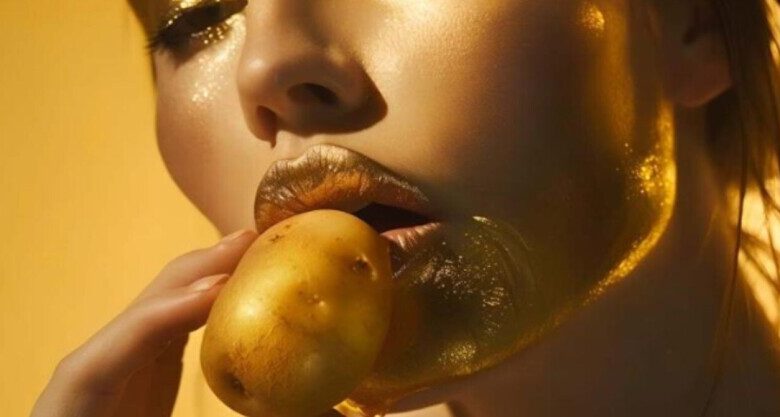An AI artist has exposed our broken food system — and a way to fix it

This article features an interview with Jeroen van der Most, who is speaking at TNW Conference on June 21. Check out the full event schedule here.
The generative AI boom is a double-edged sword for artists. On one side, the tech threatens to replace the future jobs of human creators, while exploiting their old work as training data without compensation.
On the other edge of blade, AI is providing artists with empowering new tools. For Jeroen van der Most, they also empower his latest subject: vegetables.
The Dutchman a pioneer of AI art. His portfolio stretches back way before the current text-to-image craze driven by DALL-E 2, Midjourney, and Stable Diffusion.
Van der Most (aka Most) also possesses technical expertise from previous work in data science. In 2010, he decided to redirect these skills. “I missed creativity and inspiration,” Most tells TNW.
He began his new career by using algorithms to rework Dutch masters like Van Gogh and Rembrandt. Since then, his art has covered bipartisan politics, climate change and, now, the food we eat. He calls his latest piece The Vegetable Vendetta.
Designed as an AI installation, The Vegetable Vendetta invites visitors to scan potatoes or broccoli with a camera. The scan then generates movies that mimic ads from the likes of McDonald’s and Nestlé — with vegetables in the starring roles.
The project points the lens at our broken food system.
Vengeance for vegetables
Overly processed ingredients, an obesity epidemic, and unsustainable supply chains have insidiously spread across diets and planet. All of these problems are driven by big brands with vast marketing budgets. Independent suppliers and local producers simply can’t compete with their promotional power.
AI can redress this balance. By lowering the entry barriers to visual creativity, the tech can democratise access to premium advertising.
Most wants to prove that AI can empower smaller players. He describes The Vegetable Vendetta as a “crusher” of the marketing dominance of food giants.
His system works by first extracting a vegetable from the camera footage. The image is then transformed through the likes of Midjourney, Stable Diffusion, Kaiber, and Runway.
Algorithms then weave in movie scenes and spectacular surroundings. The final film combines persuasion with first-rate video production. Potatoes and broccoli mingle with beautiful people at joyous occasions in glamorous locations.
The modest vegetables become exotic objects of desire. You can watch the transformation for yourself in the video below:
The future of AI art
The Vegetable Vendetta highlights a positive impact that AI can have on art. Most acknowledges, however, that computation creativity also has downsides.
“Tech companies get their hands on too much power and might take it away from the creatives that made the input for AI models,” he says. “The power of creation with AI by everyone also leads to slacking, to quickly producing a lot of very mediocre content.”
AI could also dilute the craftsmanship of creativity. On the other hand, it opens creative doors to people without technical skills or training.
“It’s a big misconception that art is merely about output,” Most says. “Art is a continuous cycle of reinventing what art is. That’s what AI can bring.”
As for what it brings next to art, Most wants to see what happens when AI gains “superintelligence.” He also expects quantum computing to unleash new creative forms.
“Philosophically there’s so much in there that will drip into our societies,” he says. “The future’s going to be much weirder than we imagine.”
Jeroen van der Most’s is one of many tech luminaries speaking at this year’s TNW Conference, which takes place on June 20-21 in Amsterdam. If you want to attend, we have a special offer for our readers. Use the code TNWXMEDIA at checkout to get 30% off your business pass, investor pass or startup packages (Bootstrap & Scaleup). We’re also offering a 50% discount for the Women in Tech ticket.


